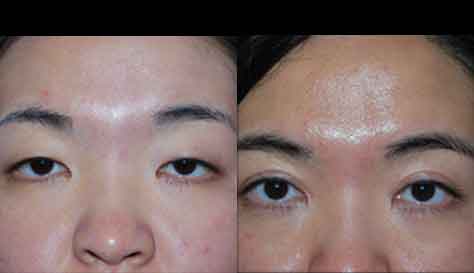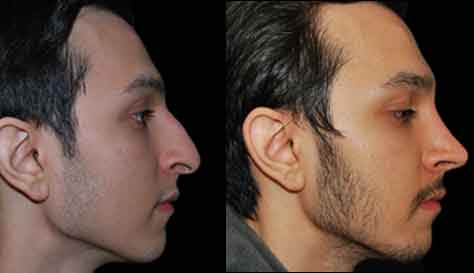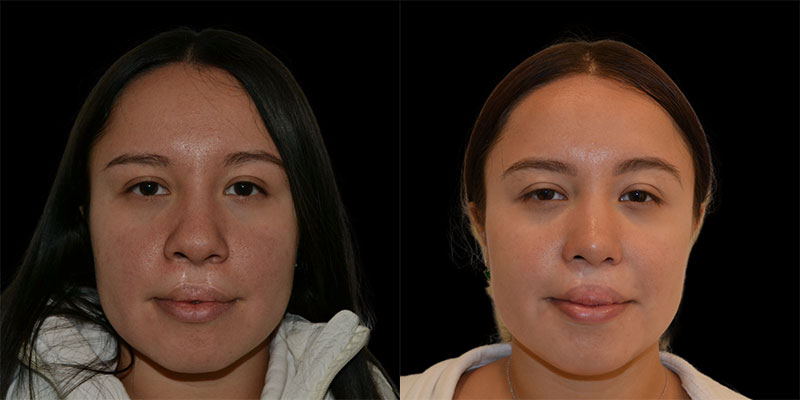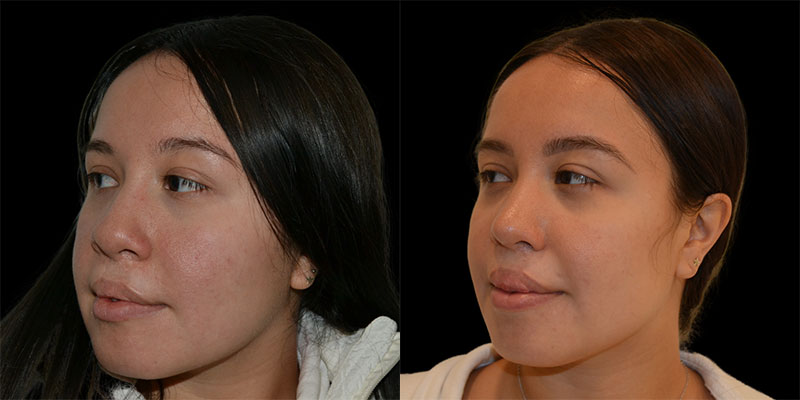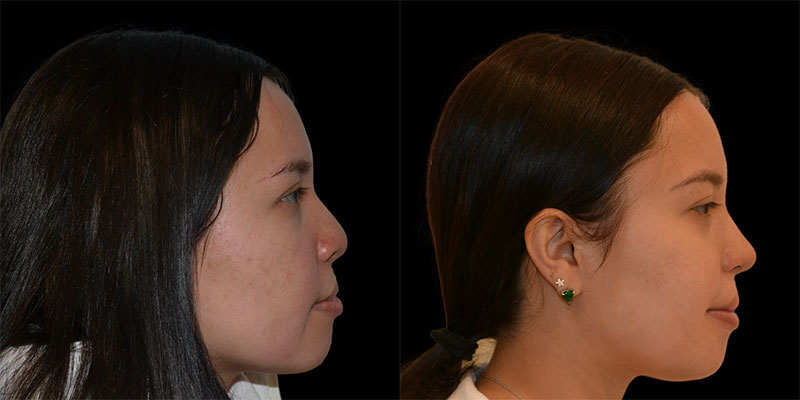Cleft Lip
Conveniently located to serve the areas of New Jersey and New York
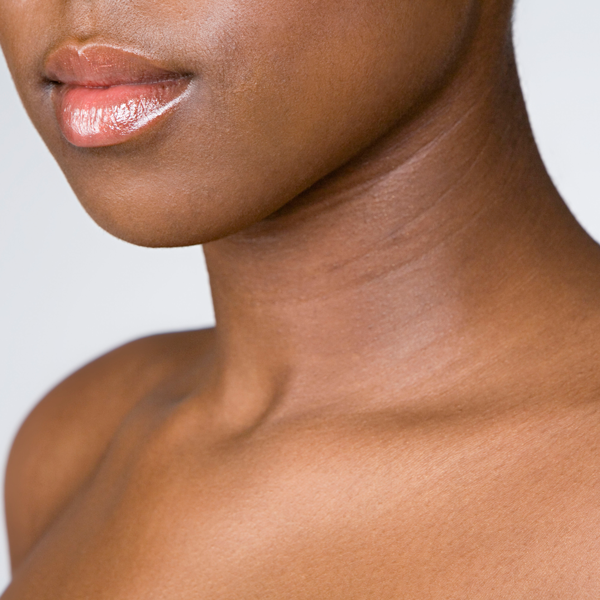
Cleft lip (cheiloschisis) and cleft palate (palatoschisis), which can also occur together as cleft lip and palate, are variations of a type of clefting congenital deformity caused by abnormal facial development during gestation. A cleft is a fissure or opening—a gap. It is the non-fusion of the body’s natural structures that form before birth. In the case of this occurring, one might want to consider cleft lip repair, also known as cheiloplasty.
Cleft Lip Before & Afters
Often an incomplete cleft lip requires the same surgery as a complete cleft. This is done for two reasons. Firstly, the group of muscles required to purse the lips run through the upper lip. In order to restore the complete group a full incision must be made. Secondly, to create a less obvious scar, Dr. Ovchinsky tries to line up the scar with the natural lines in the upper lip and tuck away stitches as far up the nose as possible. An incomplete cleft gives Dr. Ovchinsky more tissue to work with, creating a more supple and natural-looking upper lip.
Repair of the cleft lip is highly personalized. No cleft lip surgery is the same, as each patient has a different facial anatomy structure. The purpose is to create a fully functioning result as well as an aesthetically pleasing appearance.
Cleft lip and palate deformity always affect the shape of the nose and additional procedures may be needed to improve nasal appearance to the patients’ liking. The congenital nasal deformity associated with unilateral (ones sided) cleft lip usually presents as nasal dorsal deviation, tip asymmetry with flattened tip and lower dome on the cleft side and more normally appearing tip on the non-cleft side. The septum is usually also deviated and commonly causes significant nasal obstruction symptoms.

In bilateral cleft lip nasal deformities, the nose is usually not deviated however the nasal tip is usually flattened, portly projected and poorly defined with very foreshortened columella.
Cleft lip rhinoplasty surgery is aimed to address these congenital nasal malformations and restore nasal symmetry and function. Cleft lip rhinoplasty is a quite complex surgery requiring detailed knowledge of anatomy and special surgical techniques, which commonly require cartilage grafting, significant rearrangement of the tip cartilages, extensive septal surgery and local soft tissue rearrangements. With these procedures, you can expect a straighter and more symmetrical nose and improved facial balance.
A cleft lip repair is usually performed at a very young age, anywhere from 3 to 6months of age. Cleft palate surgery is usually done at about 1 year of age. Cleft lip rhinoplasty is usually done in stages, with smaller adjustments done at the time of cleft lip repair and more formal rhinoplasty surgery later in life. Dr. Ovchinsky and our staff will work together to compose the best plan possible to make the healing process as seamless as possible.
FAQ
What do I need to avoid before surgery?
If you are on “blood thinners,” you will be asked to stop them approximately one week prior to surgery. We also ask that you avoid certain over-the-counter medications. If you are taking some herbal supplements, you should stop those as well as they may contain blood thinning substances. Also, you have to completely quit smoking at least two weeks before surgery.
What about my daily medications before surgery?
You will have a preoperative appointment well in advance of your surgery when we will review all mediations with you. If you are on “blood thinners,” you will be asked to stop them approximately one week prior to surgery. We also ask that you avoid certain over-the-counter medications. You may continue taking most routine medications up until the morning of surgery with a small sip of water.
What happens after surgery?
You will go to the recovery room for a few hours until you are fully recovered from anesthesia. Once you are stable you will be taken home (or to a hotel) by your family member or a friend. You will want to stay relaxed for the first few days. You will need to keep your head elevated when in bed to help with faster resolution of swelling. You should begin to start walking, eating, and using the restroom the day after surgery. Your activity can slowly increase each day but it will take up to 2 weeks before you start to feel like your old self again. You should avoid any strenuous activity for 4 weeks. You will need to take medication prescribed to you by Dr. Ovchinsky, which usually include antibiotics, pain medicine, antibiotic ointment for the incisions, and occasionally anti-nausea medications.
Are there any dietary restrictions following surgery?
No. Patients can eat whatever they want. Advance your diet from liquids (fruit juice, milk shake, etc.) to soft food (pudding, macaroni and cheese, mashed potatoes and gravy, oatmeal, pasta) to solids as tolerated. To prevent dehydration, please drink as much juices and nutritional fluid as possible.
When will my stitches be taken out?
Stitches are normally removed five to six days after your surgery.
How soon will I be able to exercise?
Dr. Ovchinsky recommends that patients do not return to exercise for three weeks after their procedure.
When will I be able to see the results?
You may see the difference right away, and more so once the swelling goes down within the first one to two weeks. As with any surgical procedure, it takes anywhere from 6 to 12 months for the results to become final.
What is special about the way Dr. Ovchinsky does the surgery?
Dr. Ovchinsky tailors his surgical technique to an individual patient rather than using the same “run of the mill” surgery on everybody. The technique he uses causes minimal pain, has natural results, and is long-lasting. The vast majority of patients are quite surprised afterward at how little discomfort they have and how quickly they return to normal activity. Most patients have minimal bruising. Finally, with Dr. Ovchinsky technique and attention to details during skin closure, scars are typically minimal and are often difficult to see once they have fully matured.




